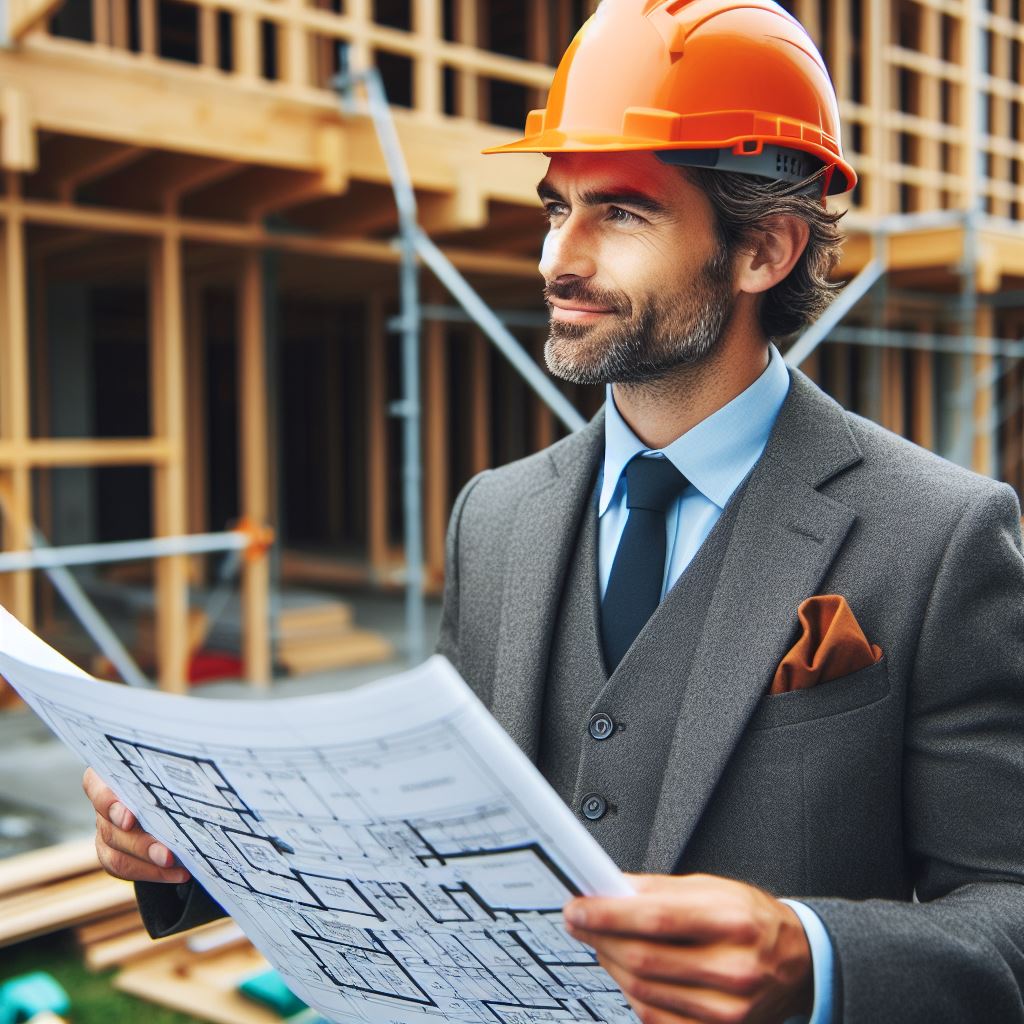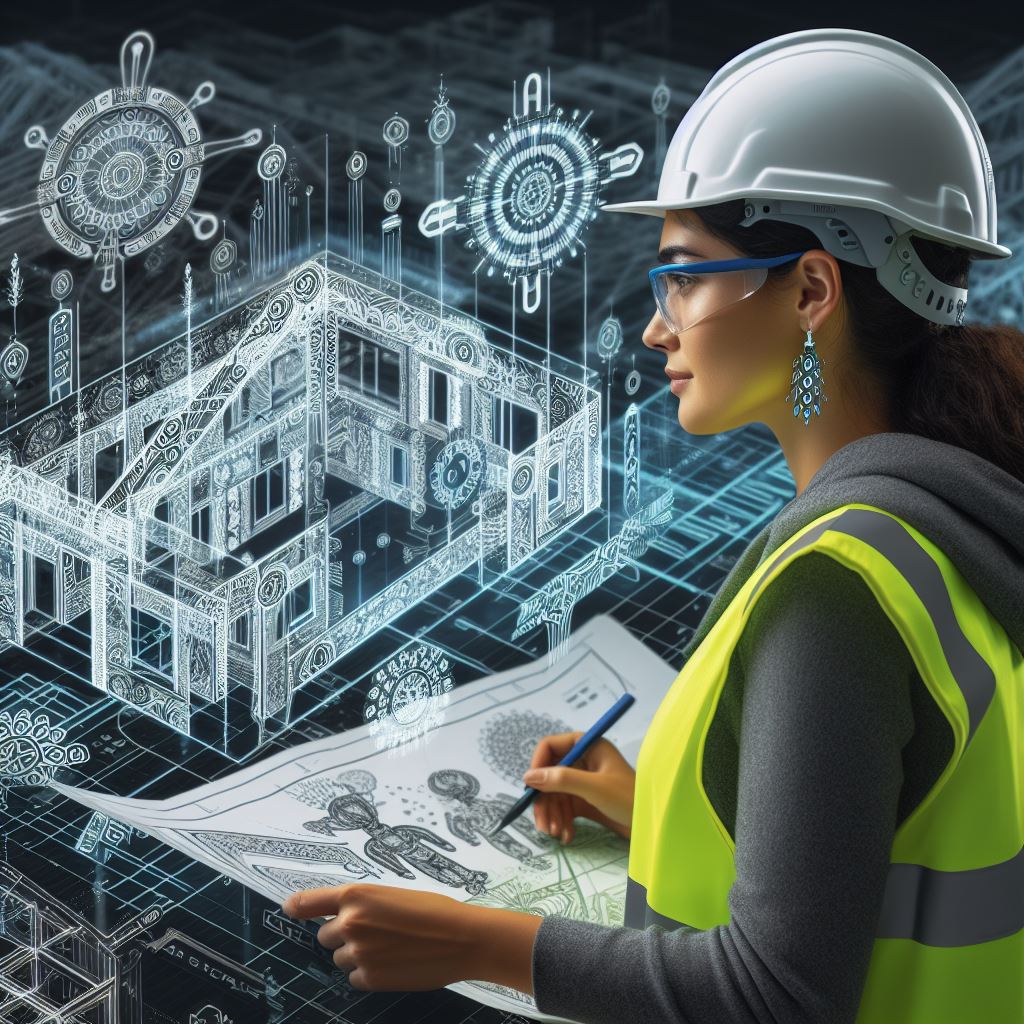Introduction
Smart buildings are reshaping how people interact with their environments, gaining traction in New Zealand.
This post delves into their future impact.
As technology continues to advance, smart buildings offer innovative solutions to enhance comfort, convenience, and efficiency.
In New Zealand, where sustainability and efficiency are paramount, the adoption of smart building technologies aligns with the country’s values.
These buildings utilize sensors, automation, and connectivity to optimize energy usage, improve occupant comfort, and enhance operational efficiency.
By integrating smart technologies, buildings can adapt to changing environmental conditions, optimize resource utilization, and reduce carbon emissions.
Furthermore, smart buildings offer insights into occupancy patterns and usage trends, enabling informed decision-making for building management.
The future of smart buildings in New Zealand holds immense potential to revolutionize urban living and working environments.
As the demand for sustainable and efficient buildings grows, smart technologies will play a pivotal role in shaping the future of construction and architecture in the country.
Embracing these innovations can lead to more resilient, energy-efficient, and comfortable built environments for all.
The Definition and Components of Smart Buildings
Smart buildings are and how they differ from traditional buildings
Smart buildings are a revolutionary concept that is reshaping the real estate industry.
Unlike traditional buildings, smart buildings are equipped with advanced technologies that enable them to operate more efficiently and provide a better experience for occupants.
The essential components of smart buildings
At the core of smart buildings are various components that work together to create an intelligent and connected ecosystem.
Sensors play a crucial role in smart buildings by collecting data about the environment and occupants.
These sensors can monitor variables such as temperature, air quality, and occupancy levels.
Automation is another essential component of smart buildings.
It allows various systems within the building, such as heating, ventilation, and lighting, to be controlled and optimized automatically.
For example, if a room is unoccupied, the automation system can adjust the temperature and turn off lights to conserve energy.
Connectivity is a key feature in smart buildings as it enables seamless communication between different systems and devices.
This connectivity allows for centralized control and monitoring of the building’s operations.
Additionally, it allows occupants to interact with the building through smart devices, giving them the ability to adjust settings and receive notifications.
Components enable buildings to optimize energy efficiency
By integrating these components, smart buildings can optimize energy efficiency, comfort, and security.
Sensors provide real-time data about the building’s energy usage, allowing for better control and management of energy consumption.
Automation systems can adjust temperature and lighting based on occupancy and external conditions, ensuring optimal comfort while minimizing energy waste.
Furthermore, smart buildings enhance security by utilizing sensors and automation to detect and respond to potential threats.
For instance, security systems can be configured to send alerts to building management or emergency services in case of suspicious activities or emergencies.
Another advantage of smart buildings is their ability to adapt and learn from data.
Machine learning algorithms can analyze data collected by sensors to identify patterns and make predictions.
This allows for proactive system maintenance, as potential issues can be identified before they escalate, reducing downtime and maintenance costs.
In summary, smart buildings redefine the concept of traditional buildings by incorporating advanced technologies and components.
Sensors, automation, and connectivity enable these buildings to optimize energy efficiency, provide comfort to occupants, and enhance security.
With the potential to learn and adapt from data, smart buildings offer a glimpse into the future of sustainable and intelligent architecture.
Read: How to Become an Electrical Engineer in NZ
Current State of Smart Buildings in New Zealand
The current adoption and implementation of smart buildings in NZ
In recent years, New Zealand has witnessed a gradual but steady adoption and implementation of smart buildings.
These futuristic structures are revolutionizing the way we design, construct, and manage buildings, offering enhanced efficiency, sustainability, and comfort for their occupants.
Examples of smart buildings in the country and their features
New Zealand boasts several notable examples of smart buildings that highlight the country’s commitment to embracing cutting-edge technology in the construction sector.
One prime example is the Christchurch Civic Building, which incorporates various smart features to optimize energy consumption and promote a sustainable work environment.
The Christchurch Civic Building utilizes advanced sensors and automation systems that monitor and regulate lighting, temperature, and ventilation based on real-time occupancy data.
This technology not only improves energy efficiency but also enhances the overall comfort and productivity of the occupants.
Another prominent smart building in New Zealand is the ASB North Wharf building in Auckland.
This structure exemplifies an intelligent design that harmonizes aesthetics, functionality, and sustainability.
It employs various state-of-the-art technologies, such as efficient lighting systems, automated shading, and a comprehensive building management system.
The building management system at ASB North Wharf allows efficient monitoring and control of various building systems, including HVAC, lighting, and security.
This integration enables the facility to optimize energy consumption, minimize environmental impact, and ensure a comfortable environment for its occupants.
Challenges or limitations faced in the widespread adoption of smart buildings
Despite the growing presence of smart buildings in New Zealand, there are still several challenges and limitations hindering their widespread adoption.
One major hurdle is the upfront cost, as implementing smart technologies often requires significant financial investment during the construction phase.
In addition to the high initial investment, there is also a lack of awareness and knowledge among building owners and stakeholders about the potential benefits and long-term cost savings offered by smart buildings.
This limited understanding often leads to reluctance in embracing these transformative technologies.
Furthermore, the lack of standardized regulations and guidelines specific to smart buildings poses challenges in terms of interoperability and integration of different systems.
For the full potential of smart buildings to be realized, a cohesive approach is required from various stakeholders, including government bodies, industry professionals, and technology providers.
Despite the challenges, the future of smart buildings in New Zealand looks promising.
The New Zealand Green Building Council has been actively promoting sustainable and smart building practices, providing certifications, and conducting research to drive the adoption of these technologies.
As the benefits and advantages offered by smart buildings become more evident and tangible, it is expected that their adoption will accelerate.
With advancements in technology and increased awareness, smart buildings have the potential to become the norm rather than the exception in New Zealand’s construction landscape.
Therefore, New Zealand is gradually embracing the concept of smart buildings, with notable examples showcasing their benefits.
However, challenges such as high upfront costs and a lack of awareness hinder widespread adoption.
Collaborative efforts from stakeholders and increased awareness can pave the way for a future where smart buildings are the standard in New Zealand.
Read: Essential Skills for NZ’s Electrical Engineers
Advantages of Smart Buildings
In today’s rapidly advancing world, intelligent buildings have become the future of architecture and construction.
With their innovative features and sustainable design, these buildings offer a range of benefits and advantages for both the environment and occupants.
Sustainability and Energy Conservation
- Smart buildings play a crucial role in reducing energy consumption and promoting sustainability.
- Through advanced automation systems, these buildings optimize energy usage, reducing waste and carbon emissions.
- Smart meters and sensors monitor and control energy consumption, promoting efficient usage and conservation.
- Integration of renewable energy sources such as solar panels further minimizes dependence on fossil fuels.
- With energy-efficient lighting, heating, and ventilation systems, intelligent buildings significantly reduce energy costs.
Increased Comfort and Convenience
- Smart buildings are designed to prioritize the comfort and well-being of occupants.
- Automated climate control systems adjust temperature and airflow based on individual preferences.
- Occupants can personalize settings such as lighting, window shades, and music preferences.
- Smart devices and applications allow remote control and monitoring of various building functions.
- With smart security systems, occupants feel safe and have peace of mind.
Enhanced Productivity
- Smart buildings create an environment that promotes productivity and efficiency.
- Optimized lighting systems ensure adequate illumination, reducing eye strain and fatigue.
- Automated systems control noise levels, creating a quieter workplace conducive to concentration.
- Smart meeting rooms equipped with modern technology enable seamless collaboration and communication.
- Efficient space management and utilization maximize workflow and minimize time wastage.
Overall, intelligent buildings provide numerous advantages for both the environment and the occupants.
By adopting sustainable practices and utilizing advanced technologies, these buildings contribute significantly to energy conservation and reduction of carbon footprint.
Occupants of intelligent buildings enjoy increased comfort and convenience through personalized settings and automated systems.
The ability to control various aspects of the building remotely enhances the overall experience and convenience.
Moreover, intelligent buildings create an atmosphere that enhances productivity and efficiency.
By optimizing lighting, controlling noise levels, and providing modern meeting spaces, these buildings support collaboration and concentration, thereby boosting productivity.
As the future of architecture, intelligent buildings in New Zealand pave the way for sustainability, energy conservation, and improved occupant experience.
With their innovative features and design, they are transforming the way we live and work, setting the standard for future construction.
Read: Interview: NZ Electrical Engineers’ Success Stories
Personalized Career Consulting
Unlock your potential with expert career advice tailored to your goals. Get personalized guidance and actionable steps toward your dream career in New Zealand.
Get Started
Trends and Innovations in Smart Buildings
- Advancements in IoT technology have greatly impacted intelligent buildings in NZ.
- IoT allows for better automation, monitoring, and control of various building systems.
- Sensors and connected devices collect data to optimize energy usage and enhance occupant comfort.
- Smart thermostats and lighting systems adjust based on occupancy and user preferences.
- Real-time data analytics help in identifying areas for improvement and energy-saving opportunities.
- Smart buildings now feature advanced security systems with biometric access control and video surveillance.
- Integration of renewable energy sources like solar panels is becoming common in intelligent buildings.
- Energy management systems efficiently distribute power and store excess energy for later use.
- Smart grids enable buildings to interface with the larger power grid and sell excess energy.
- Smart windows and automated shading systems maximize natural light while reducing heat gain.
- Building management systems can monitor air quality and adjust ventilation accordingly for a healthier environment.
- Intelligent water management systems detect leaks and optimize water usage in intelligent buildings.
- Smart buildings also focus on enhancing user experience with personalized control interfaces and apps.
- Voice-based assistants and AI-powered chatbots provide instant assistance and control over building systems.
- Machine learning algorithms analyze data to predict maintenance needs and reduce downtime.
- Smart buildings aim to create sustainable and eco-friendly environments for occupants.
- Efficient waste management systems encourage recycling and reduce overall environmental impact.
- Smart buildings prioritize accessibility, incorporating features for people with disabilities.
- The future may see the integration of virtual reality to simulate and optimize building designs.
- As technology advances, intelligent buildings will continue to evolve and adapt to changing needs.
- Government incentives and regulations are further driving the adoption of smart building practices in NZ.
- Investments in smart building technologies can result in significant cost savings and increased property value.
Read: Women in Electrical Engineering in NZ
Future Outlook of Smart Buildings in NZ
In this section, we will explore the future outlook of smart buildings in New Zealand.
We will predict the growth and potential of intelligent buildings, discuss government regulations, incentives, and policies, and explore potential challenges and obstacles that need to be overcome for widespread adoption.
Predicting Future Growth and Potential
Smart buildings have the potential to revolutionize the way we live and work in New Zealand.
With advancements in technology and the increasing focus on sustainable living, the demand for smart buildings is expected to grow substantially in the coming years.
These buildings will not only offer convenience and comfort but also enhance energy efficiency and reduce the carbon footprint.
The integration of Internet of Things (IoT) devices in intelligent buildings will enable seamless connectivity and automation of various systems.
This will lead to improved energy management, predictive maintenance, and enhanced security and safety measures.
The market for smart building technologies is projected to witness significant growth, presenting numerous opportunities for businesses and investors in New Zealand.
Role of Government Regulations, Incentives, and Policies
The New Zealand government recognizes the importance of intelligent buildings in achieving sustainable development goals and has implemented various regulations, incentives, and policies to promote their adoption.
These initiatives aim to support businesses, homeowners, and communities in transitioning to smart buildings.
Government regulations have been put in place to ensure the safety, efficiency, and interoperability of smart building technologies.
Incentives, such as tax breaks and grants, are provided to encourage the implementation of energy-efficient and sustainable systems.
Policies are also being developed to facilitate the integration of renewable energy sources and encourage the use of smart grid technologies in buildings.
Challenges and Obstacles to Overcome
While the future prospects of intelligent buildings in New Zealand are promising, there are several challenges and obstacles that need to be overcome for widespread adoption.
One major challenge is the high upfront costs associated with implementing smart building technologies.
The initial investment might deter some homeowners and businesses from adopting these systems.
However, as technology advances and economies of scale come into play, the costs are expected to decrease, making intelligent buildings more accessible to a wider audience.
Another obstacle is the lack of awareness and knowledge about smart building technologies.
Many people are still unfamiliar with the benefits and functionalities of these systems.
Educating the public and raising awareness about the long-term advantages of intelligent buildings will be crucial in driving their widespread adoption.
Furthermore, ensuring data security and privacy is essential in the era of IoT-connected smart buildings.
As these buildings collect and analyze vast amounts of data, stringent measures need to be in place to protect this information from unauthorized access and breaches.
Overall, the future of smart buildings in New Zealand looks promising with expected growth and potential.
The role of government regulations, incentives, and policies is crucial in promoting their adoption.
However, challenges such as upfront costs, lack of awareness, and data security need to be addressed for widespread acceptance.
With continued advancements and efforts, smart buildings have the potential to shape a more sustainable and efficient future in New Zealand.
Conclusion
The future of intelligent buildings in NZ holds great potential to transform the building industry. Throughout this blog post, we have discussed several key points.
Firstly, intelligent buildings have the ability to significantly enhance energy efficiency, reduce carbon emissions, and create sustainable living spaces.
Secondly, the integration of advanced technologies, such as IoT and AI, can optimize building operations, enhance occupant comfort, and improve overall building management.
Thirdly, the incorporation of data analytics and predictive maintenance can lead to cost savings, prolong the lifespan of building assets, and improve maintenance practices.
Overall, intelligent buildings offer immense opportunities for the construction industry in NZ to create a more sustainable and advanced built environment.
As we move forward, it is crucial to keep an eye on the future developments in intelligent buildings. Continued innovation and research in this field will undoubtedly lead to even more efficient and intelligent building solutions.
By adopting smart building technologies and practices, NZ can pave the way towards a greener and more sustainable future.
Let us embrace this exciting era of intelligent buildings, where technology and sustainability go hand in hand, and contribute to a better tomorrow.
Transform Your Career with a Professional CV and Cover Letter
Stand out to employers with an ATS-optimized resume and tailored cover letter designed to match your dream role. Let us craft your job application materials for success!
Get Started



